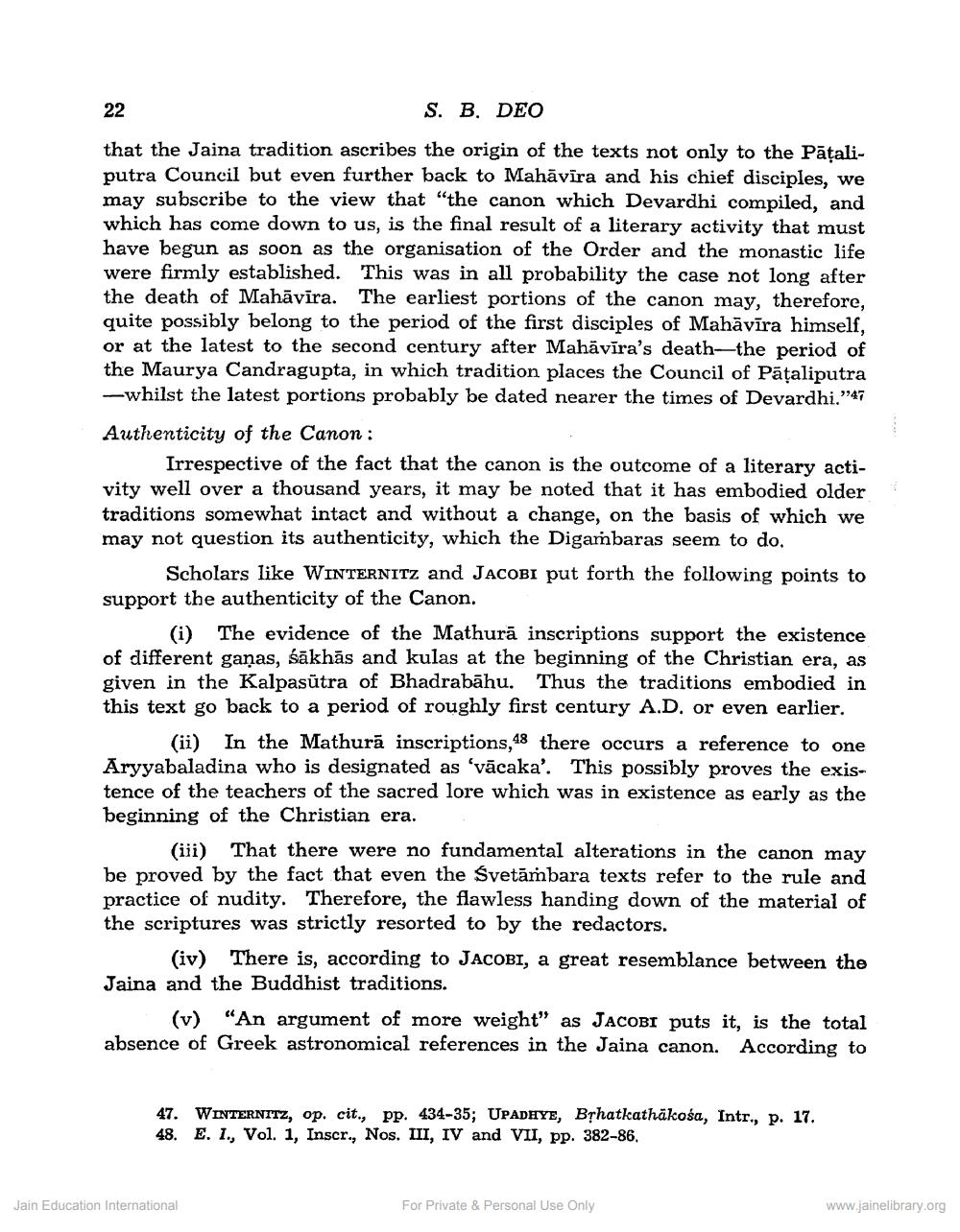________________
22
S. B. DEO
that the Jaina tradition ascribes the origin of the texts not only to the Pataliputra Council but even further back to Mahāvīra and his chief disciples, we may subscribe to the view that "the canon which Devardhi compiled, and which has come down to us, is the final result of a literary activity that must have begun as soon as the organisation of the Order and the monastic life were firmly established. This was in all probability the case not long after the death of Mahāvīra. The earliest portions of the canon may, therefore, quite possibly belong to the period of the first disciples of Mahāvīra himself, or at the latest to the second century after Mahavira's death—the period of the Maurya Candragupta, in which tradition places the Council of Pāțaliputra
-whilst the latest portions probably be dated nearer the times of Devardhi.”47 Authenticity of the Canon :
Irrespective of the fact that the canon is the outcome of a literary activity well over a thousand years, it may be noted that it has embodied older traditions somewhat intact and without a change, on the basis of which we may not question its authenticity, which the Digambaras seem to do.
Scholars like WINTERNITZ and JACOBI put forth the following points to support the authenticity of the Canon.
(i) The evidence of the Mathurā inscriptions support the existence of different ganas, sākhās and kulas at the beginning of the Christian era, as given in the Kalpasūtra of Bhadrabāhu. Thus the traditions embodied in this text go back to a period of roughly first century A.D. or even earlier.
(ii) In the Mathurā inscriptions, 48 there occurs a reference to one Aryyabaladina who is designated as 'vācaka'. This possibly proves the existence of the teachers of the sacred lore which was in existence as early as the beginning of the Christian era.
(iii) That there were no fundamental alterations in the canon may be proved by the fact that even the Svetāmbara texts refer to the rule and practice of nudity. Therefore, the flawless handing down of the material of the scriptures was strictly resorted to by the redactors.
(iv) There is, according to JACOBI, a great resemblance between the Jaina and the Buddhist traditions.
(v) “An argument of more weight" as JACOBI puts it, is the total absence of Greek astronomical references in the Jaina canon. According to
47. WINTERNITZ, op. cit., pp. 434-35; UPADHYE, Bphatkathākoša, Intr., p. 17. 48. E. I., Vol. 1, Inscr., Nos. III, IV and VII, pp. 382-86.
Jain Education International
For Private & Personal Use Only
www.jainelibrary.org




